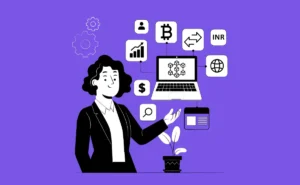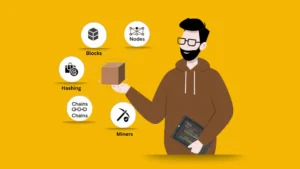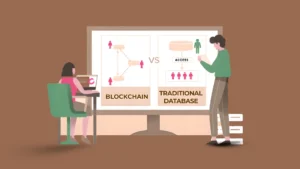
Cryptocurrencies are changing the world of finance in ways we couldn’t imagine just a few years ago. They allow people to make payments, store value, and even run digital contracts without needing a bank or government. Among the thousands of cryptocurrencies available today, two names often stand out: Bitcoin (BTC) and Ripple (XRP).
While both are digital currencies and based on blockchain technology, they are very different in how they operate, what they are used for, and the goals they were designed to achieve. This complete beginner’s guide explains the differences between Bitcoin and Ripple in simple, easy-to-understand language. Whether you are a curious learner or someone thinking about investing, this guide will help you understand the basic yet important differences between these two major cryptocurrencies.
What is Bitcoin (BTC)?
Bitcoin is the first and most well-known cryptocurrency. It was launched in 2009 by a mysterious individual or group under the name Satoshi Nakamoto. Bitcoin was created in response to the 2008 financial crisis. Its main purpose was to offer an alternative to traditional banking systems by giving people full control over their money.
Purpose of Bitcoin
The goal of Bitcoin is to create a decentralized form of money that doesn’t rely on banks or governments. It’s often called digital gold because, like gold, it’s scarce, valuable, and can be used as a store of value.
How Bitcoin Works
Bitcoin works on a system called blockchain, which is a public digital ledger. All transactions are recorded in blocks, and these blocks are linked together to form a chain. Bitcoin networks use a process called Proof of Work (PoW) to secure the network. This means that powerful computers around the world solve complex puzzles to confirm transactions and earn new bitcoins
Key Features of Bitcoin
- Decentralized: No single entity controls Bitcoin.
- Limited Supply: Only 21 million BTC will ever exist.
- Secure & Transparent: All transactions are recorded on a public ledger.
- Global Access: Anyone with internet can use it.
- Immutable: Transactions cannot be altered once confirmed.
What is Ripple (XRP)?
Ripple is different from Bitcoin in many ways. First, Ripple is both a company (Ripple Labs) and a network for digital payments. XRP is the digital token used within the Ripple network. Ripple was launched in 2012 to help banks and financial institutions send money faster and more efficiently, especially across countries.
Purpose of Ripple and XRP
Ripple was built not to replace banks but to work with them. The main idea is to create a faster and cheaper way for financial institutions to send money across borders. XRP acts as a bridge currency, making it easier to exchange one currency for another.
How Ripple Works
Unlike Bitcoin, Ripple doesn’t use mining. Instead, it uses something called the Ripple Protocol Consensus Algorithm (RPCA). This method involves a group of trusted servers or nodes that agree on transactions every few seconds. This system is faster and uses much less energy than Bitcoin’s Proof of Work.
Key Features of XRP
- Fast Transactions: Confirmations within 3–5 seconds.
- Low Fees: Usually less than $0.01.
- High Scalability: Over 1,500 transactions per second.
- Eco-Friendly: No mining, minimal energy use.
- Bridge Currency: Enables currency conversion for cross-border payments.
Major Differences Between Bitcoin and Ripple
Even though both Bitcoin and Ripple are cryptocurrencies, they are very different in many ways. Let’s look at some of the most important differences:
-
Purpose and Use Case
Bitcoin: Bitcoin was created to be a decentralized digital currency, allowing individuals to transact directly without intermediaries. It is often referred to as “digital gold” due to its use as a store of value.
Ripple: Ripple was designed for banks and payment providers to move money across borders quickly and cost-effectively. XRP acts as a liquidity tool to make these transactions faster and cheaper.
-
Consensus Mechanism
Bitcoin: Bitcoin uses Proof of Work (PoW). Miners solve complex mathematical problems to validate transactions and secure the network. This process is energy-intensive but highly secure.
Ripple: Ripple uses the Ripple Protocol Consensus Algorithm (RPCA), where trusted validators reach consensus on the state of the ledger. This method is faster and more energy-efficient, but some argue it’s more centralized.
-
Transaction Speed and Cost
Bitcoin: Bitcoin transactions can take from 10 minutes to an hour, especially during network congestion. Transaction fees vary and can become high during busy periods.
Ripple: XRP transactions settle in 3 to 5 seconds and have very low fees, typically less than $0.01. This makes XRP ideal for real-time international payments.
-
Supply Limit
Bitcoin: Bitcoin has a fixed supply of 21 million coins, and new coins are created through mining. This scarcity adds to its value over time.
Ripple: XRP had 100 billion tokens pre-mined at its launch. No new XRP will ever be created. Ripple Labs holds a large portion of the XRP supply, releasing it gradually into the market.
-
Decentralization
Bitcoin: Bitcoin is fully decentralized. Thousands of nodes across the world run the Bitcoin network, and no single entity controls it.
Ripple: Ripple is often criticized for being more centralized. While it uses a unique consensus model, Ripple Labs still controls a significant portion of the XRP supply and the validator list.
-
Energy Efficiency
Bitcoin: Bitcoin is energy-intensive due to the mining process. Critics argue that it’s not environmentally sustainable at scale.
Ripple: Ripple (XRP) is much more energy-efficient since it doesn’t require mining. Its consensus mechanism consumes minimal energy.
-
Developer and Ecosystem
Bitcoin: Bitcoin is open-source and supported by a global community of developers. Its ecosystem includes wallets, exchanges, payment processors, and a wide array of DeFi and NFT integrations.
Ripple: Ripple is maintained by Ripple Labs, which actively develops tools for financial institutions. While the XRP futures is also open-source, its development is more enterprise-focused.
-
Regulatory Position
Bitcoin: Bitcoin is widely accepted as a commodity in many countries and has become part of institutional portfolios.
Ripple: Ripple/XRP has faced regulatory challenges, particularly in the United States. The ongoing legal case between Ripple and the SEC has impacted its market standing, though recent developments have been favorable to Ripple.
Pros and Cons of Bitcoin and Ripple
-
Bitcoin Pros
- Highly secure and decentralized
- Fixed supply boosts long-term value
- Accepted globally with high liquidity
-
Bitcoin Cons
- Slower transactions and high fees
- High energy consumption
- Not ideal for small or frequent payments
-
Ripple (XRP) Pros
- Super-fast and low-cost transactions
- Energy-efficient and scalable
- Great fit for financial institutions and cross-border transfers
-
Ripple (XRP) Cons
- Centralized control by Ripple Labs
- Legal uncertainties
- Not widely used for everyday purchases
Should You Invest in Bitcoin or Ripple?
When it comes to investment, both Bitcoin and XRP have their pros and cons. Bitcoin is seen as a safer, more stable investment due to its limited supply and long history. It’s often compared to gold and used by many as a hedge against inflation.
XRP, on the other hand, is more focused on solving real-world problems in banking. If Ripple’s network gets adopted more widely by banks, the value of XRP could rise significantly. However, XRP is riskier due to its legal issues and the large amount of coins held by Ripple Labs. If you’re just starting out, it’s a good idea to research both, start small, and never invest money you can’t afford to lose.
Simple Side-by-Side Comparison
Which is Better?
Choosing between Bitcoin and Ripple ultimately comes down to your goals and what you’re looking for in a cryptocurrency.
- Choose Bitcoin if you’re looking for a store of value or digital gold. Bitcoin has the advantage of being the most recognized and decentralized cryptocurrency, with widespread adoption as an asset and currency.
- Choose Ripple (XRP) if you’re interested in efficient cross-border payments and the future of financial systems. Ripple is designed to provide real-time, low-cost settlements for banks and payment providers, making it a key player in the global financial landscape.
Ready to Invest? Explore Bitcoin or Ripple Now!
Both Bitcoin and Ripple (XRP) are important players in the cryptocurrency space, but they serve very different purposes. Bitcoin futures are focused on decentralization and giving people financial freedom, while Ripple is working with banks to improve how money moves around the world.
If you’re just starting with cryptocurrencies, knowing these differences is essential. Bitcoin is like a digital version of gold—great for holding value over time. Ripple, on the other hand, is like a super-fast digital money system that helps banks and businesses send money quickly.
In the end, your choice depends on what you want to do. If you’re looking for a long-term investment, Bitcoin may be a better fit. If you’re interested in how technology is improving financial systems, Ripple could be worth exploring. No matter which you choose, always do your own research, understand the risks, and start small.






